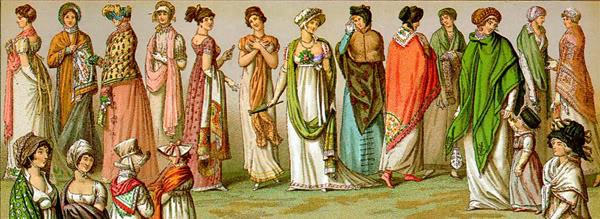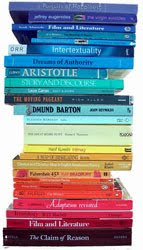Cottage Pie
I haven't done a food recipe in a while, so here's one. It's cottage pie, Regency style. The first mention of Cottage Pie was in 1791, when the Rev. James Woodford mentions eating it with roast beef for dinner.
•2 lbs ground beef
•1 tablespoon oil
•2 onions finely chopped
•2 tomatoes chopped or one small can of peeled, diced tomatoes
•2 tablespoons all-purpose flour
•1 cup beef stock or bouillon
•1/2 teaspoon thyme
•1/4 teaspoon sage
•1/4 teaspoon cinnamon
•1 tablespoon chopped parsley
•5 medium potatoes
•1/4 cup butter, softened
•1 cup milk
•salt and pepper
•1/4 pound shredded Cheddar cheese (optional)
Place a large skillet over medium heat. Brown the beef in oil. Remove from pan and set aside.
Drain most of the accumulated fat from the pan. Sauté onions until tender, and then add chopped tomatoes and cook for 2–3 minutes. Add broth and stir in herbs, seasonings, and flour. Return brown meat to skillet and continue cooking for 5–15 minutes on low heat untill almost all of the liquid has been absorbed. Transfer mixture to an ovenproof casserole.
Place diced potatoes in a medium saucepan. Cover with water and place over high heat. Allow to come to a boil. Boil for 15 minutes, or until potatoes are tender. Drain.
Mash potatoes until smooth, then add butter, followed by milk. Whip until fluffy. Add salt and pepper to taste.
Spread potatoes over beef filling (scoring them with a fork) and dot with butter. For a non-traditional pie, sprinkle with grated Cheddar cheese.
Bake in a preheated oven (25 minutes at 400 degrees or 30–40 minutes at 375 degrees) until top is browned and cheese is bubbly.


 "A room without books is like a body without a soul." —Cicero
"A room without books is like a body without a soul." —Cicero I have signed books I disliked, but because they were addressed to me, I keep them. I have books that I don't particularly like, but I keep them, because I have had them for a very long time. History! I have classics that I absolutely hated(!!) but if you claim to be a reader, you better have those prominently on your shelves. Tradition! I have books, I have no interest is ever reading, but they hang out on the to-be-read (TBR) bookshelf, because you never know, a miracle could occur, and I'd read those books.
I have signed books I disliked, but because they were addressed to me, I keep them. I have books that I don't particularly like, but I keep them, because I have had them for a very long time. History! I have classics that I absolutely hated(!!) but if you claim to be a reader, you better have those prominently on your shelves. Tradition! I have books, I have no interest is ever reading, but they hang out on the to-be-read (TBR) bookshelf, because you never know, a miracle could occur, and I'd read those books.  Coffee table photobooks make great gifts, but after the first few perusals, they are relegated to organized, artistic arrangements next to photographs or acting as shelves for said photographs. They are nothing more than dust collectors at that point. The only book that gets a lot of use in our house is the atlas.
Coffee table photobooks make great gifts, but after the first few perusals, they are relegated to organized, artistic arrangements next to photographs or acting as shelves for said photographs. They are nothing more than dust collectors at that point. The only book that gets a lot of use in our house is the atlas. I leave you with these:
I leave you with these:


 Hollywood uses the term "meet cute" to describe the first time the hero and heroine come together.
Hollywood uses the term "meet cute" to describe the first time the hero and heroine come together. If done right, a virtual stage has already been set up before that crucial meeting—where the hero and the heroine are, what time it is, their names, and what they look like—so we can see them and watch the unfolding action. But it's not just the impactful circumstances of the meeting that make it memorable.
If done right, a virtual stage has already been set up before that crucial meeting—where the hero and the heroine are, what time it is, their names, and what they look like—so we can see them and watch the unfolding action. But it's not just the impactful circumstances of the meeting that make it memorable. 
 Louisa May Alcott wrote of Jo March, "She is too fond of books, and it has turned her brain." This is certainly true of rock star librarian Nancy Pearl. As the winner of the Women’s National Book Association Award and the author of Book Lust and More Book Lust, she certainly knows about books "for every mood, moment, and reason."
Louisa May Alcott wrote of Jo March, "She is too fond of books, and it has turned her brain." This is certainly true of rock star librarian Nancy Pearl. As the winner of the Women’s National Book Association Award and the author of Book Lust and More Book Lust, she certainly knows about books "for every mood, moment, and reason."  Among the classics, Pearl gives a nod to Austen, the Brontes, du Maurier, Baroness Orczy, Georgette Heyer, and Victoria Holt. Absent from this section are Regina Towers who wrote for Candlelight Regencies, Joan Smith for Fawcett, Janet Louise Roberts, and many more. Perhaps the most egregious loss is the doyenne of romance Barbara Cartland, who sold over a billion copies of her 723 books and left behind 160 unpublished manuscripts.
Among the classics, Pearl gives a nod to Austen, the Brontes, du Maurier, Baroness Orczy, Georgette Heyer, and Victoria Holt. Absent from this section are Regina Towers who wrote for Candlelight Regencies, Joan Smith for Fawcett, Janet Louise Roberts, and many more. Perhaps the most egregious loss is the doyenne of romance Barbara Cartland, who sold over a billion copies of her 723 books and left behind 160 unpublished manuscripts. 

 For more information, read the
For more information, read the